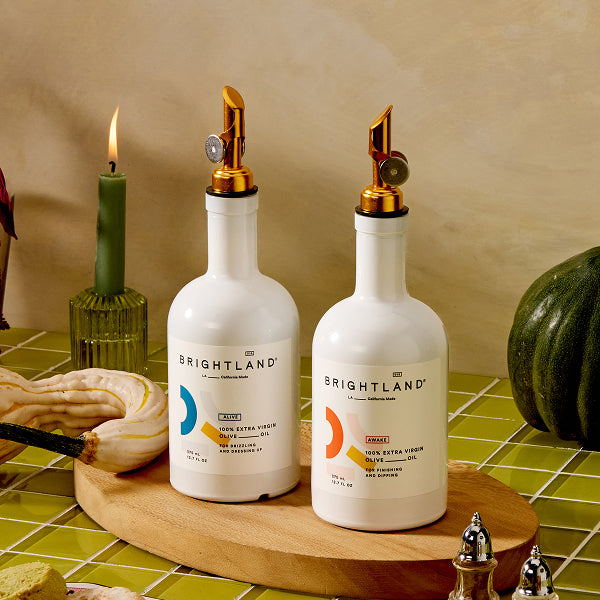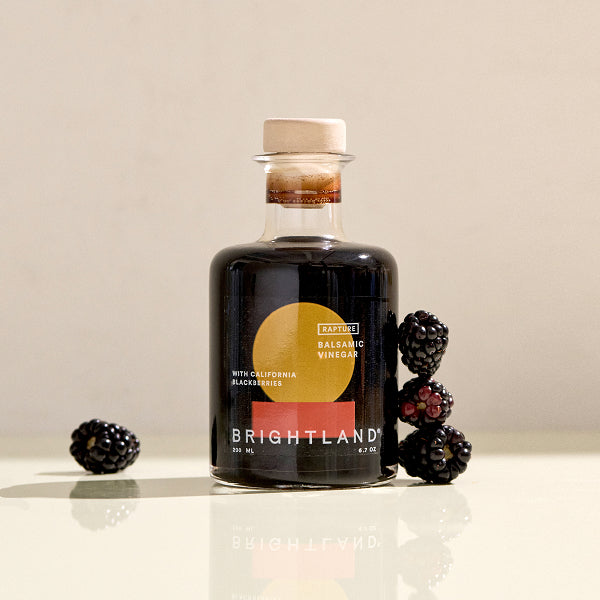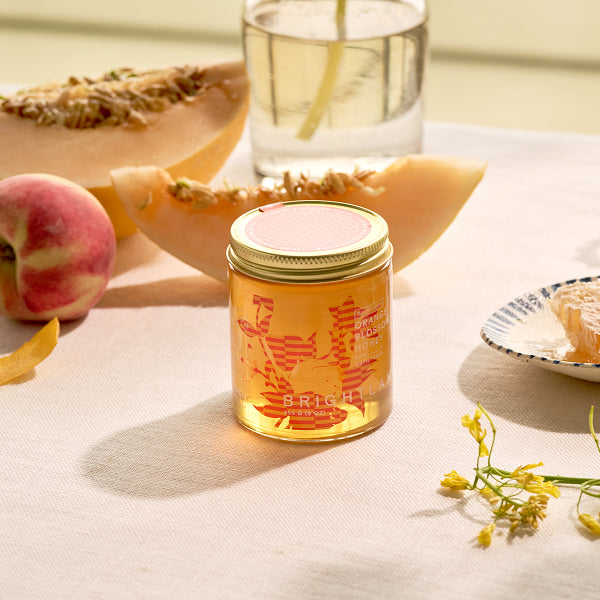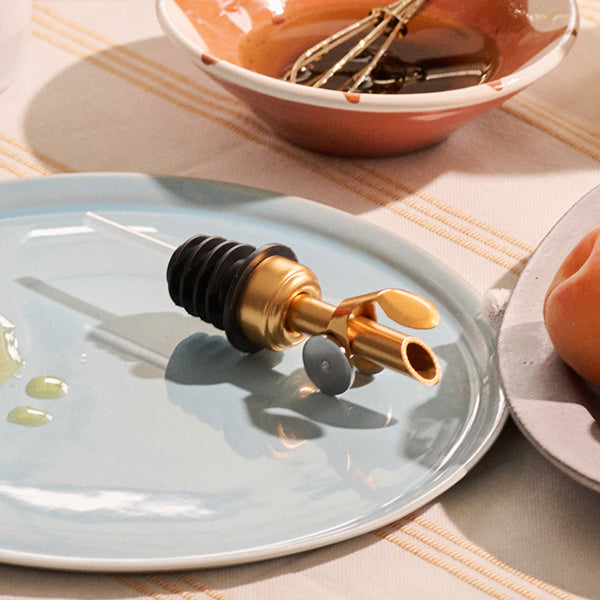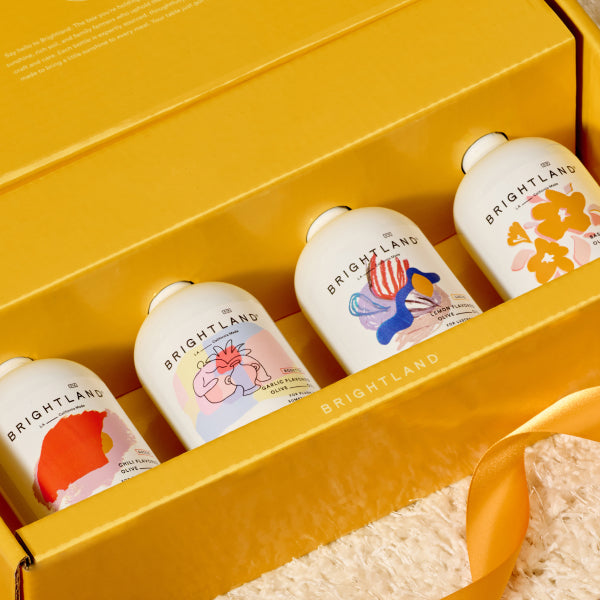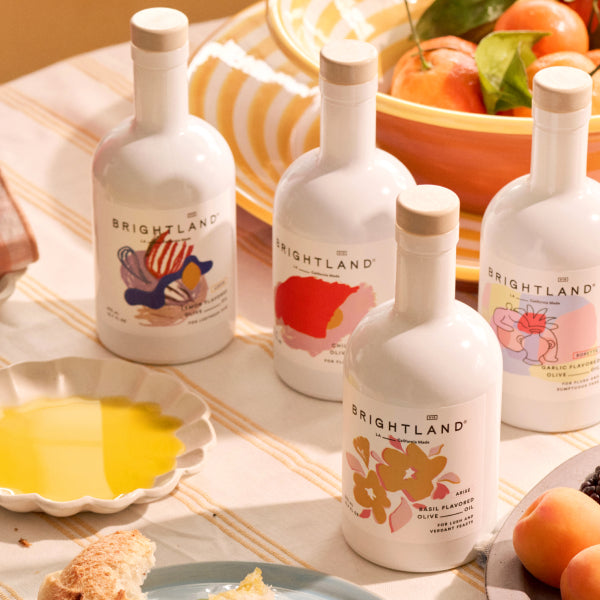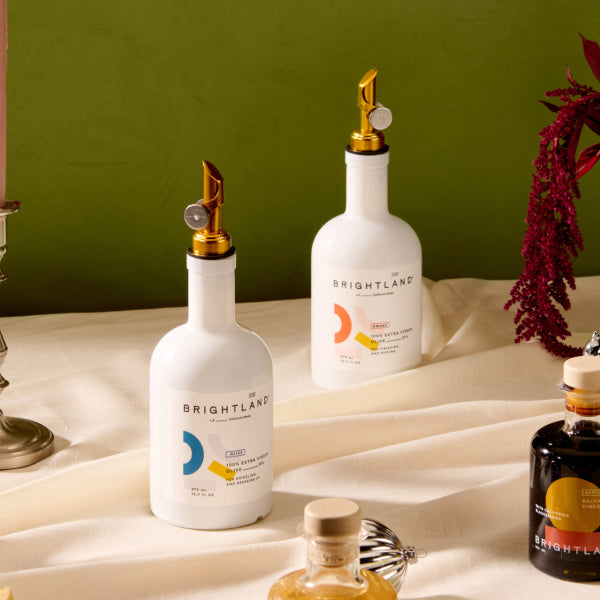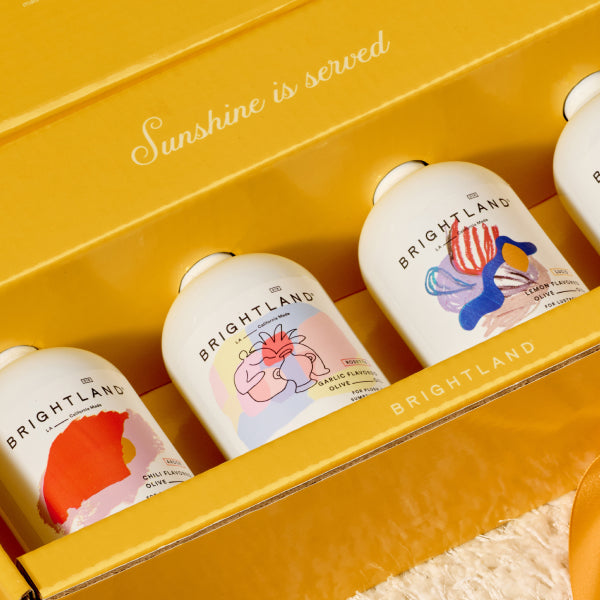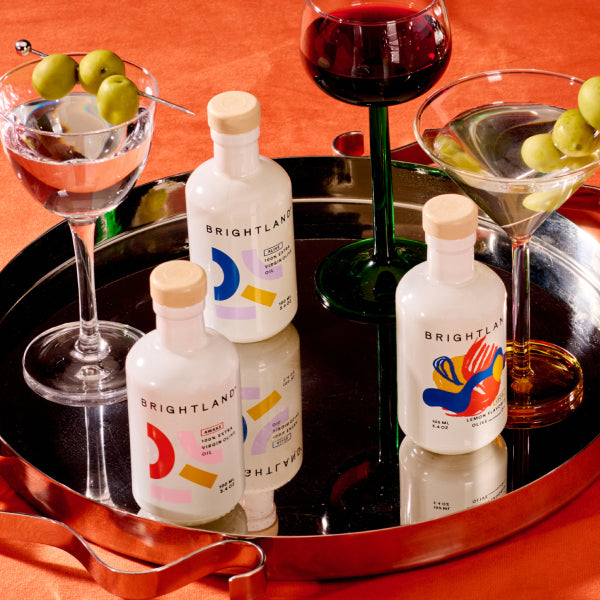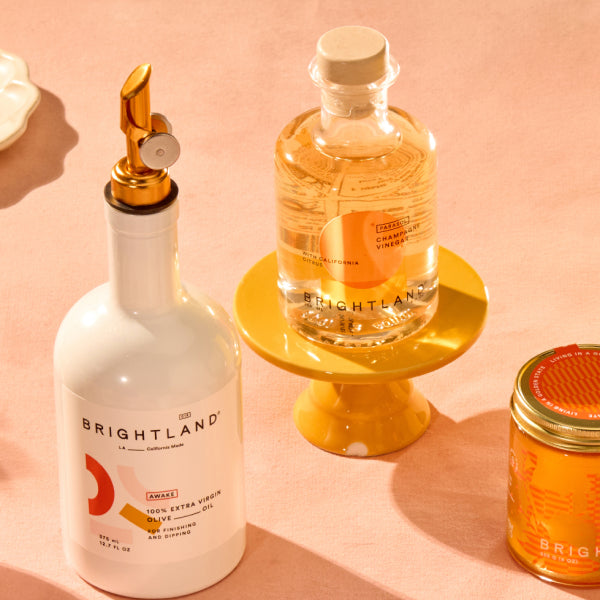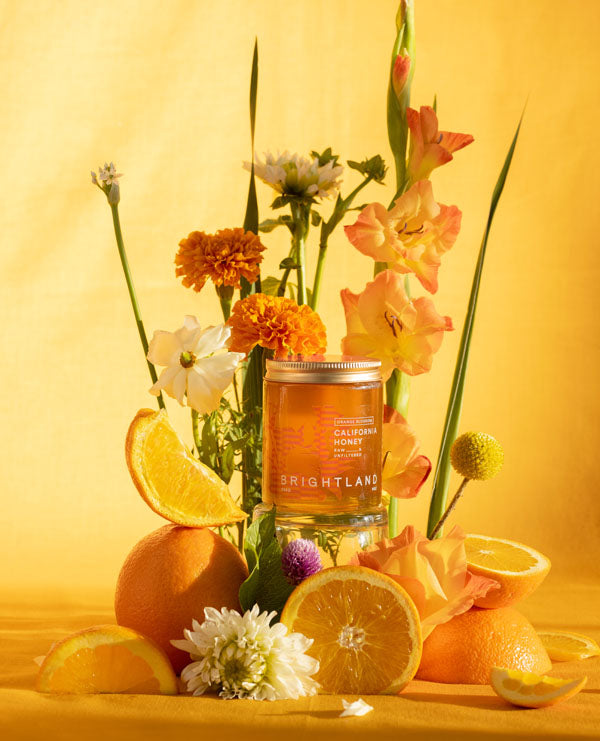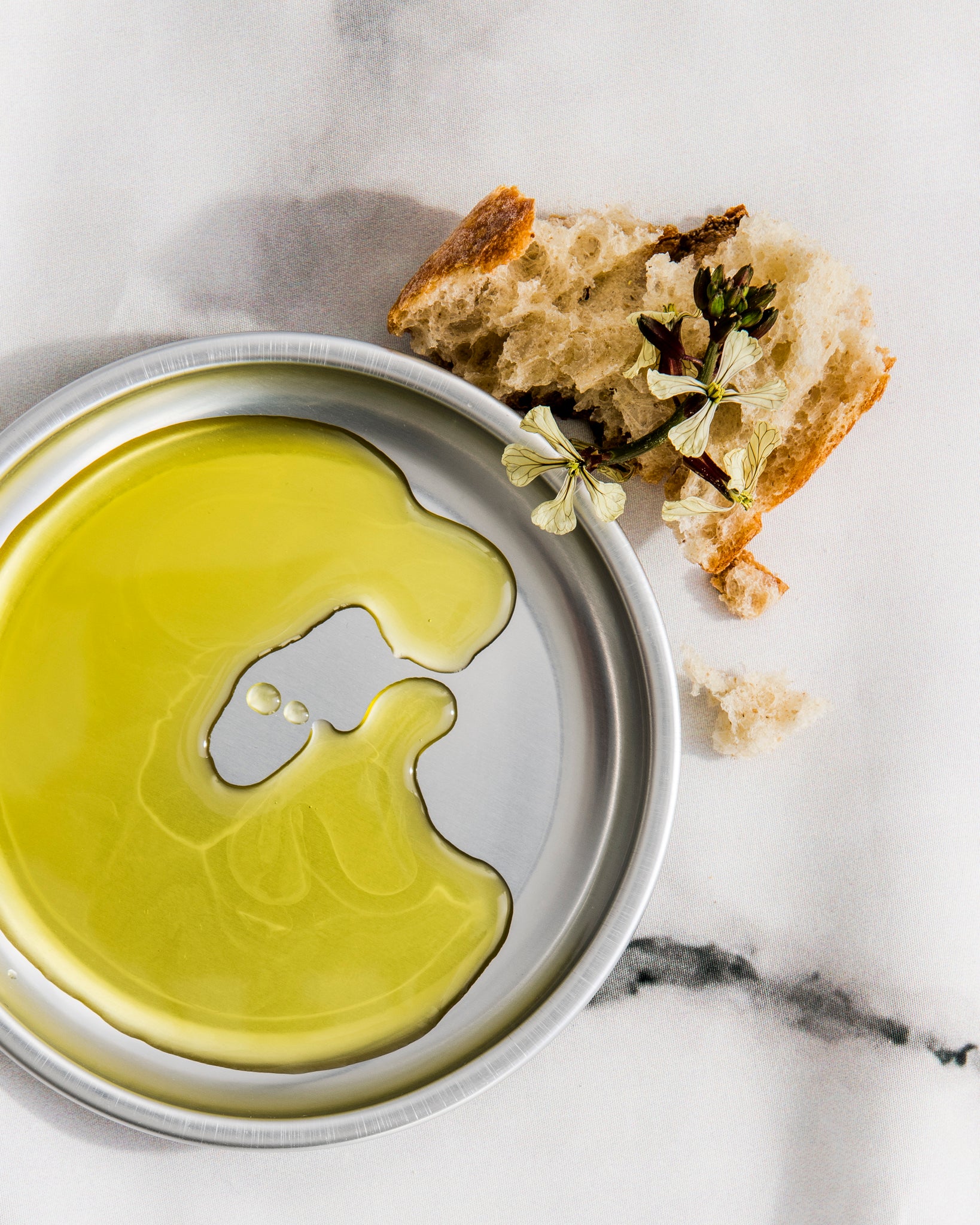
When it comes to sugar substitutes, honey and agave are two of the most popular ones on the market right now. Honey and agave are very similar in color and texture, leading some people to wonder what the difference is between them and even to confuse them for each other sometimes. However, flavored honey and agave are actually very different sweeteners, which becomes clear when you compare them. In this guide, we will investigate how honey and agave are made, what nutritional benefits they offer, how environmentally sustainable they are and more to clear up the difference between these two sweeteners.
[close type="rte"][open type="rte"]Honey vs. Agave: How They Are Made
Honey and sugar may both be sweeteners, but they come from different sources. Honey originates as liquid nectar inside of a flower, which is extracted by bees. (Because its production involves animals, honey is generally not considered suitable for a vegan diet.) The bees fly the nectar back to the hive and deposit it inside honeycombs, where it is broken down into simple sugars. During this process, the fanning of the bees’ wings causes a certain amount of liquid to evaporate, which is aided by the hexagon shape of honeycombs. As the evaporation continues, the nectar thickens to form honey.
In order to harvest the honey, the honeycombs must be removed from the hive first. Then, the wax cups that plug each honeycomb “hole” are scraped off. The honeycombs are placed in a centrifuge and spun around so that the honey is pushed out of the combs. Once the centrifuge has worked, the honeycombs are removed from the device, leaving the honey behind. To remove debris such as bits of honeycomb, the honey is then strained at least once.

At this step, the honey might be bottled or jarred, at which point it is referred to as raw honey. However, large commercial honey operations often utilize additional processing techniques, such as pasteurization (heating the honey to very high temperatures). The honey may be filtered a second or even a third time to remove air bubbles and make it more aesthetically pleasing. It may also be mixed in with other syrups, such as corn syrups, to dilute it and reduce costs.
Agave syrup also comes from a plant, especially its namesake agave plant. Agave plants actually first became known as the source of tequila. Their use as a source of sweetener was a later discovery. There are several types of agave plants, and blue agave is the one most commonly used to make both agave nectar and tequila. Because it comes from a plant and does not involve any animals in the production process, agave has recently gained a lot of attention in the vegan community as an alternative to honey.
Agave are spiny desert plants native to Mexico which store sugar in a core that looks a bit like a pineapple. To harvest this core, the spiny leaves are first removed from the plant. Then, the core is taken from the ground and transported to the processing facility. It is heated to soften the core, which is then chopped up into pieces. The pieces are spun through a centrifuge to help release the nectar, which may be filtered to remove debris and/or heated to further thicken it. Then, it is bottled and shipped out to be sold.
[close type="rte"][open type="rte"]Honey vs. Agave: Taste and Texture
Unlike sugar, which takes the form of dry granules, both honey and agave come in a liquid form with a thick consistency. However, there are still differences in the taste and texture between these two sweeteners. Agave tends to be a bit thinner in consistency than honey, which can make it slightly easier to incorporate into foods and beverages at cold or room temperatures. For baking, the honey may need to be warmed to reach the desired state of liquidity. Both of them are shelf stable and can be kept in a cool, dry pantry.
[close type="rte"][open type="images" small="true"]
Both honey and agave nectar taste sweet (this is obviously why they are used as sweeteners), but there are also differences in the flavor. For one, honey is available in a much wider variety of flavors than agave. This is because agave nectar comes from only a few varieties of agave plants, primarily blue agave, which means that not many flavors are available. Meanwhile, bees collect nectar from the flowers of many different plants to make honey, which means that there are many delicious varieties of honey available for you to sample. Our raw honey set, The Couplet, shows off two of these flavors — California orange blossom and Kauai wildflower — but there are definitely others out there for you to try. If you are looking for variety in sweeteners, then honey is definitely the way to go.
Keep in mind that certain processing steps, such as excess filtering and the application of heat, can affect the taste of both honey and agave nectar. This is because this additional processing removes pollen and other flavorful compounds that contribute to the taste of the honey or the agave. If you buy honey or agave that has been highly processed, then it will simply taste blandly sweet instead of offering unique flavors. Choose raw honey for the most distinctive flavor experience.
[close type="rte"][open type="rte"]Honey vs. Agave: Nutritional Benefits
Honey and agave may both be sweeteners, but they each have a different chemical composition and thus offer different nutritional benefits. For starters, they both contain fructose and glucose, but at different percentages. Honey contains roughly 40 percent fructose and 30 percent glucose, while agave contains 55 to 90 percent fructose with the remaining 10 to 40 percent being glucose (depending on how it is processed).
Agave received a lot of hype due to its low glycemic index, which results from the higher levels of fructose. Agave nectar has a GI rating of about 17, lower than that of both honey (60-74) and white sugar (68). As such, agave nectar was thought to be a better choice for diabetics, who must carefully monitor their sugar and glycemic intake to avoid blood sugar spikes and dips. However, because of the high sugar content, agave can still cause a blood glucose spike in diabetics despite the low glycemic index. Thus, consumption of agave nectar should be monitored and limited just like any other sugar with a higher glycemic rating.
[close type="rte"][open type="images" small="true"]
Honey also contains other beneficial compounds besides just fructose and glucose. These compounds include enzymes, amino acids, B vitamins, vitamin C, minerals and antioxidants. Because of these beneficial compounds, honey offers other benefits besides just tasting delicious, including antimicrobial and anti-inflammatory effects. Agave does not contain additional compounds and thus cannot provide extra benefits the way that honey can. (Learn more about “Is honey good for you?”)
In the previous section, we discussed how extra processing can adversely impact the flavor of honey, and this is true for the nutritional benefits as well. The same pollen that adds flavor to honey also provides much of the nutritional benefits, so extra filtration or pasteurization will make honey less nutritious. To get the highest levels of flavorful, nutritious honey, select a raw honey that has not been pasteurized or filtered.
One very important difference is that honey can cause infant botulism in rare cases, while agave nectar “has not been associated with botulism,” according to the Journal of the American Medical Association. Botulism from food is caused by trace amounts of bacterial spores that contain a toxin called botulinum. While older children and adults have immune systems that are developed enough to defend them against botulism, infants’ immune systems are not advanced enough for that yet. Thus, doctors say that infants under one year of age should not be fed honey out of caution.
[close type="rte"][open type="rte"]Honey vs. Agave: Environmental Impact
Agave is often touted as being more environmentally friendly than honey due to the fact that it does not require animals to be reproduced. However, agave is not as sustainable as it might appear at first glance. Due to agave nectar’s rising popularity, many small growers have been pushed out by large commercial operations. Most agave is also grown in monocrop fields, which depletes the soil and upsets the delicate ecological balance.

Agave plants take around seven years to reach full maturity — which is a long time — and only flower and bloom once before dying. Due to the increased demand for agave nectar, the plants are often harvested before maturity so the cores can be turned into agave nectar. This means that the plants cannot reproduce naturally and farmers must instead rely on clones to create the next crop. Clones are less genetically diverse than plants that are reproduced naturally, making the entire crop of agave more vulnerable to disease and endangering the number of agave varieties.
Thus, agave is not automatically more environmentally friendly than honey. However, big commercial honey operations can also endanger local wild bee populations, which are critical pollinators of a wide variety of plants. Some commercial operations also do not treat their bees ethically, either because it is more profitable or because the larger operations make it difficult to oversee the health of so many colonies at once. Sadly, that cheap honey or agave might be good for your wallet, but it is almost certainly not good for the environment.
In both cases, buying from smaller farms that produce smaller batches with higher quality control gives you the highest odds of getting an environmentally friendly product. For instance, our two Brightland raw honeys are both sourced from family farms within the United States that pay great attention to the health of the bee colonies to ensure that honey production can continue sustainably.
Honey vs. Agave: Substituting for Sugar
Both honey and agave can be substituted for sugar in baking recipes and other applications. Both of them are sweeter than sugar, though not by the same amount, so different adjustments need to be made when making these substitutes.

To substitute honey for sugar:
- Replace 1 cup of sugar with ½ cup of honey
- Reduce the oven temperature by 25 degrees Fahrenheit
- If using more than 1 cup of honey (i.e., if the recipe calls for more than 2 cups of sugar), decrease liquids in the recipe by 25 percent and add ½ teaspoon of baking soda
To substitute agave nectar for sugar:
- Replace 1 cup of sugar with 2/3 cup of agave
- Reduce the oven temperature by 25 degrees Fahrenheit
- Reduce liquids in the recipe by 25 percent
- For every 15 minutes of baking time, add one minute
If the honey is too thick to evenly incorporate into a cold or room temperature batter, do not be afraid to warm it up a little until the consistency thins. This will ensure that you can mix it into the batter evenly so that you do not end up with lumps of honey.
[close type="rte"][open type="images" count="1"]
Ready to try out raw honey? Brightland’s raw honey set features one jar each of California Orange Blossom Honey and Kauai Wildflower Honey so you can try two different flavors at once. We carefully package the glass jars to protect them in transit, just like all our other Brightland products. Stock up on our other pantry essentials, too!
Image Credits
Voin_Sveta/Shutterstock.com
Dionisvera/Shutterstock.com
W1d/Shutterstock.com
superbank stock/Shutterstock.com
[close type="rte"]
